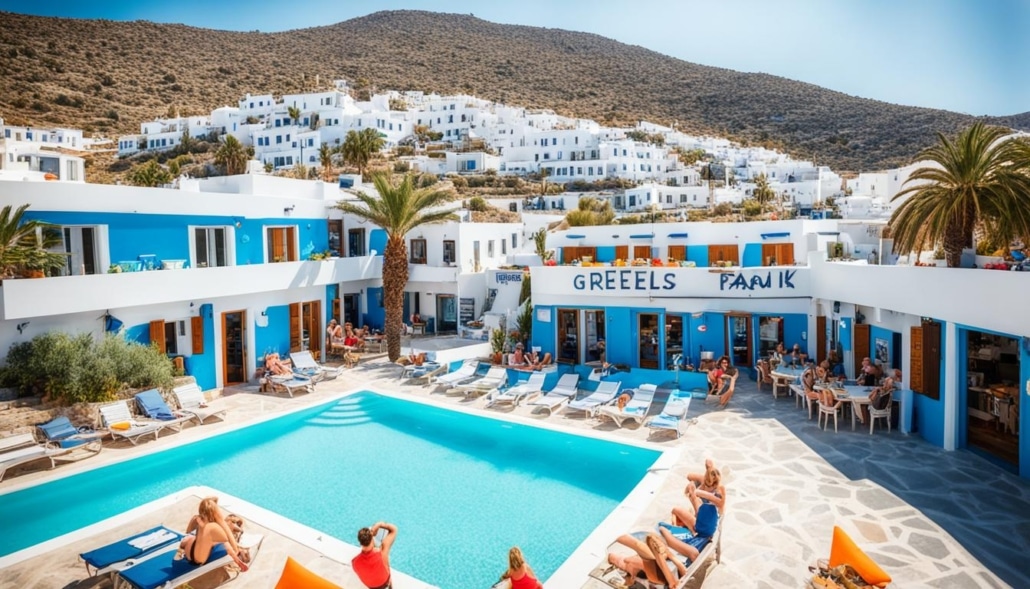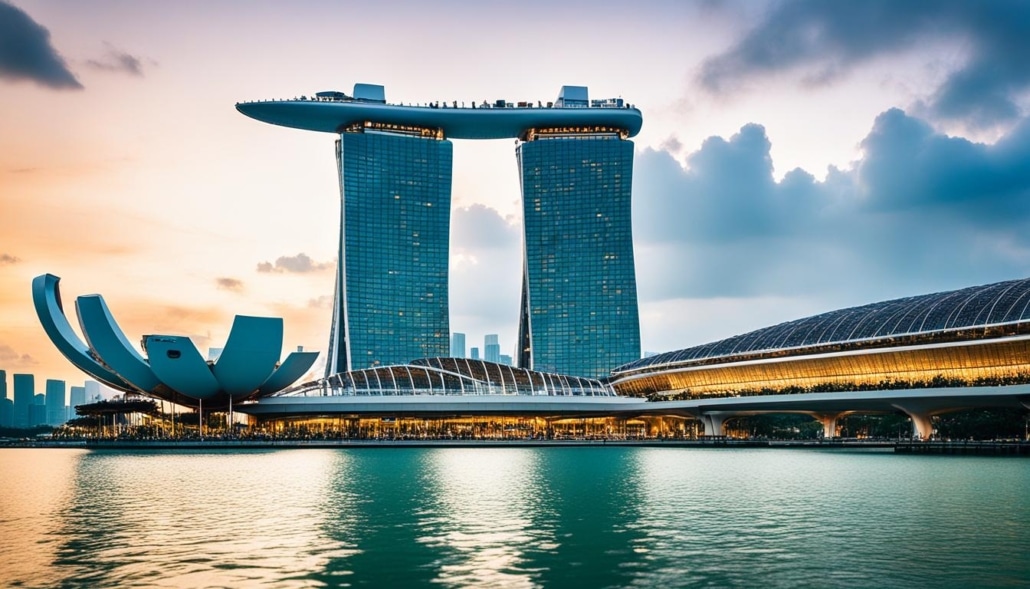Looking for the perfect destination to live your digital nomad dreams? Look no further! In 2024, several countries have emerged as top choices for remote workers and digital nomads around the world. These destinations offer the perfect balance of internet speed, cost of living, healthcare, and overall quality of life. Whether you’re a freelancer, entrepreneur, or employee working remotely, these destinations provide the ideal environment for you to work and travel at your own pace.
Key Takeaways:
- Spain, Argentina, and Romania are the top destinations for digital nomads in 2024.
- These countries offer digital nomad visas and favorable policies for remote workers.
- Spain provides an ideal environment with its remote work visa and well-regarded healthcare system.
- Argentina offers high internet speed, discounts for visa holders, and a tax-free stay for nomads.
- Romania boasts excellent internet speed and a relatively affordable cost of living.
Spain – The Ideal Destination for Digital Nomads
Spain has secured the top position on the list of top destinations for digital nomads in 2024, offering an ideal environment for remote work and a fulfilling travel experience. With its remote work visa, individuals can live in Spain for up to a year, as long as they meet the income requirement of double Spain’s minimum wage. This visa provides digital nomads with the opportunity to explore the rich cultural heritage and experience the mild climate that Spain has to offer.
In addition to its welcoming visa policy, Spain boasts a well-regarded healthcare system, ensuring that digital nomads have access to quality medical care during their stay. Whether it’s enjoying the vibrant nightlife in Barcelona, soaking up the sun on the beaches of the Costa del Sol, or immersing oneself in the history and architecture of Madrid, Spain offers a diverse range of experiences for digital nomads to enjoy.
Furthermore, Spain’s high-speed internet and thriving coworking spaces make it an attractive destination for remote workers looking to stay productive while enjoying the country’s beautiful surroundings. Take advantage of the opportunity to work by the seaside or in the charming streets of Spain’s picturesque towns.
Spain’s digital nomad visa, income requirement, and healthcare system create an enticing environment for remote workers who want to combine work and travel.
Explore the benefits of being a digital nomad in Spain, where you can find inspiration, connect with like-minded individuals, and live a fulfilling, nomadic lifestyle.
| Benefits | Spain | Other Countries |
|---|---|---|
| Digital Nomad Visa | Available for up to a year | Varying durations |
| Income Requirement | Double Spain’s minimum wage | Varies by country |
| Healthcare System | Well-regarded and accessible | Varies by country |
| Cultural Heritage | Rich and diverse | Varies by country |
| Internet Speed | High-speed internet | Varies by country |
| Cost of Living | Reasonable and affordable | Varies by country |
Argentina – A Digital Nomad Haven
Argentina secured the second spot on the list of top destinations for digital nomads in 2024. With its breathtaking landscapes, vibrant culture, and welcoming locals, Argentina offers an enticing environment for remote workers seeking adventure and inspiration.
The country’s digital nomad visa program makes it even more appealing for those looking to live and work in Argentina. This visa allows remote workers to stay for up to six months, with the option to renew for an additional year. To be eligible for the visa, individuals must have a remote job and hold a passport from a country that doesn’t require an Argentine visa.
With a strong focus on promoting tourism, Argentina offers high-speed internet connections across the country, ensuring that digital nomads can stay connected and productive. Additionally, holders of the digital nomad visa can enjoy discounts on various services, making their stay in Argentina even more cost-effective.
One of the significant advantages of choosing Argentina as a digital nomad destination is the tax-free status for visa holders. Remote workers with an Argentine visa are exempt from income tax, providing an attractive financial benefit.
Argentina’s popularity as a tourist destination is also a significant draw for digital nomads. From the vibrant streets of Buenos Aires to the breathtaking landscapes of Patagonia, there is no shortage of sights to explore and experiences to embrace.
“Living and working in Argentina has been a dream come true. The blend of vibrant culture, natural beauty, and welcoming communities has truly enriched my digital nomad experience.” – Maria Rodriguez, Digital Nomad
Income Requirements for the Digital Nomad Visa in Argentina
In order to qualify for the digital nomad visa in Argentina, individuals must have a remote job or be self-employed. There are no specific income requirements for the visa, but applicants must provide proof of sufficient funds to support their stay in the country.
Comparison of Top Digital Nomad Destinations
| Country | Digital Nomad Visa Duration | Internet Speed | Income Requirements | Tourism Popularity |
|---|---|---|---|---|
| Spain | 1 year | High | Income equivalent to double the minimum wage | High |
| Argentina | 6 months, renewable for 1 year | High | Proof of sufficient funds | High |
| Romania | 1 year | High | No specific requirements | Moderate |
Romania – A Rising Destination for Digital Nomads
Romania has secured the third spot on the list of top destinations for digital nomads in 2024. With its excellent internet speed and relatively affordable cost of living, it has become an attractive option for remote workers looking for an ideal work-life balance.
Digital Nomad Visa: Romania offers a digital nomad visa that allows individuals to stay for up to a year. This visa enables remote workers to live and work in Romania legally while enjoying the benefits of the country’s emerging digital infrastructure.
Internet Speed: Remote workers rely heavily on a stable and fast internet connection, and Romania doesn’t disappoint in this regard. The country boasts excellent internet speed, ensuring seamless communication and efficient remote work.
Cost of Living: Romania provides a relatively affordable cost of living compared to other popular digital nomad destinations. Remote workers can enjoy a comfortable lifestyle while keeping their expenses under control.
With its growing digital infrastructure and favorable conditions for remote work, Romania has become a rising star for digital nomads seeking a unique experience. Whether it’s exploring the picturesque landscapes of Transylvania, immersing in the vibrant culture of Bucharest, or connecting with a dynamic digital nomad community, Romania offers a wealth of opportunities for both work and leisure.
Testimonials
“Romania has been a game-changer for my digital nomad journey. The internet speed is incredible, allowing me to work seamlessly without any disruptions. Additionally, the low cost of living has allowed me to stretch my budget further and experience more of this beautiful country.” – Sofia Johnson, Digital Nomad
“I was pleasantly surprised by the digital nomad visa offered by Romania. It has made my transition so much smoother, providing me with peace of mind knowing that I can stay legally and focus on my work. The friendly locals and breathtaking landscapes have made this country a true gem for digital nomads.” – David Anderson, Remote Worker
Key Statistics
| Aspect | Statistics |
|---|---|
| Digital Nomad Visa Duration | Up to 1 year |
| Internet Speed | Excellent |
| Cost of Living | Relatively affordable |
Conclusion
The digital nomad lifestyle is on the rise, and more countries are recognizing the value of catering to remote workers. In 2024, Spain, Argentina, and Romania have emerged as top destinations for digital nomads, offering a combination of favorable policies, high-quality digital infrastructure, and vibrant lifestyles.
Spain, with its remote work visa and mild climate, provides an ideal setting for remote workers seeking a work and travel balance. The country’s well-regarded healthcare system ensures peace of mind while exploring its rich cultural heritage or relaxing on its sunny beaches.
Argentina, on the other hand, offers a digital nomad visa that allows individuals to stay for up to a year. With high internet speeds and discounts on various services for visa holders, Argentina is a haven for remote workers. Its popularity with tourists adds to the appeal, providing ample opportunities for cultural experiences and exploration.
Romania, a rising destination for digital nomads, boasts excellent internet speed and a relatively affordable cost of living. The country’s digital nomad visa allows individuals to stay for up to a year, making it an attractive option for those seeking a change of scenery while working remotely. With its growing tech scene, Romania offers exciting possibilities for professionals in the digital industry.
FAQ
What are the top destinations for digital nomads in 2024?
The top destinations for digital nomads in 2024 are Spain, Argentina, and Romania.
What makes Spain an ideal destination for digital nomads?
Spain offers a digital nomad visa, favorable income requirements, a well-regarded healthcare system, and a vibrant lifestyle.
What are the benefits of choosing Argentina as a digital nomad destination?
Argentina offers a digital nomad visa, high internet speed, discounts on services for visa holders, and a tax-free stay for nomads with an Argentine visa.
Why is Romania a rising destination for digital nomads?
Romania boasts excellent internet speed, a relatively affordable cost of living, and a digital nomad visa that allows individuals to stay for up to a year.
What are the advantages of the digital nomad lifestyle?
The digital nomad lifestyle allows for remote work and a fulfilling travel experience, providing ample opportunities for exploration and work-life balance.
Source Links
- https://www.cnbc.com/2023/12/16/best-countries-for-digital-nomads-visaguideworld-study.html
- https://www.timeout.com/news/its-official-these-are-the-best-countries-for-digital-nomads-in-2024-113023
- https://www.flatio.com/blog/the-10-best-countries-for-digital-nomads-and-expats-in-2024-quality-of-life-visa-options-weather-and-more



















